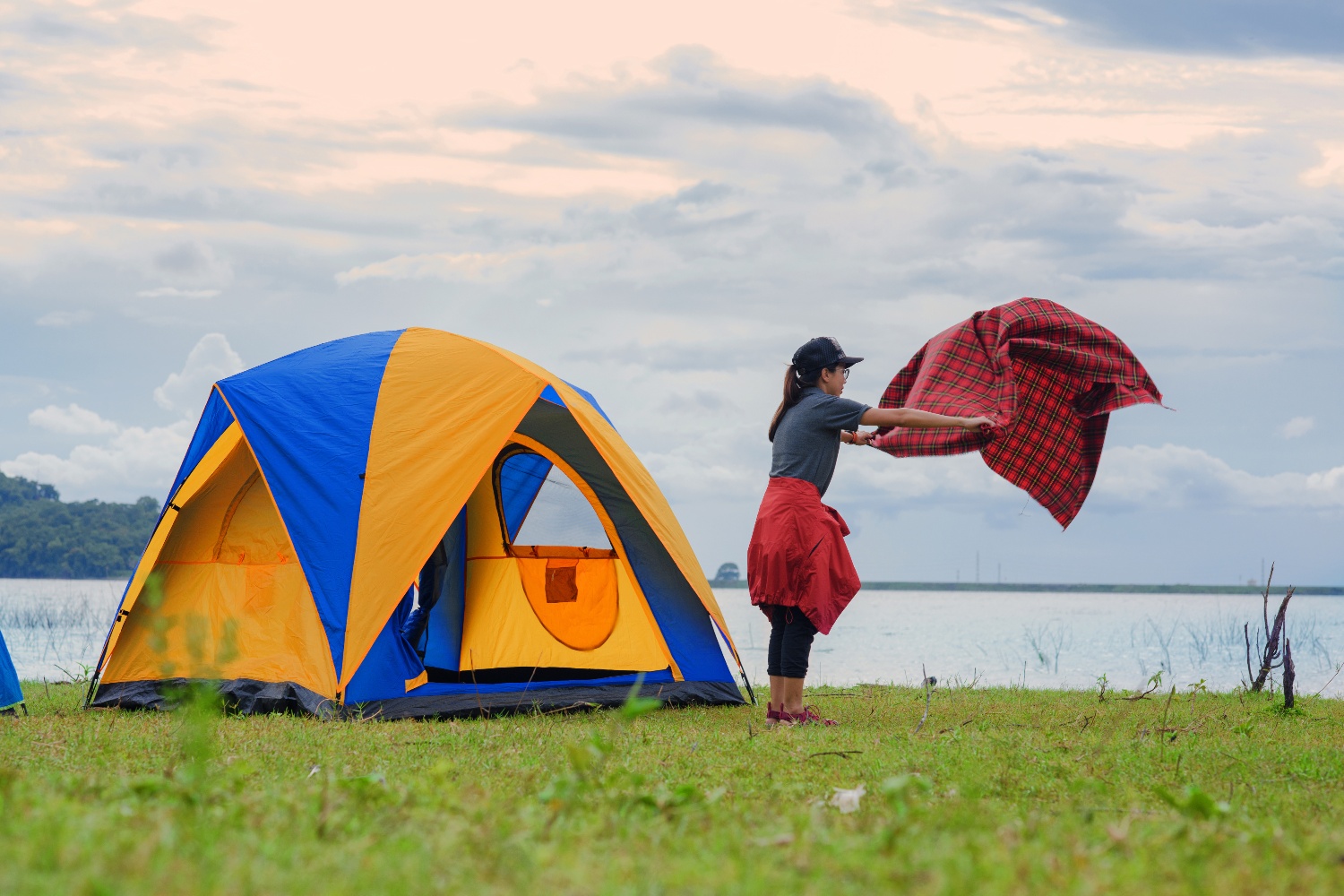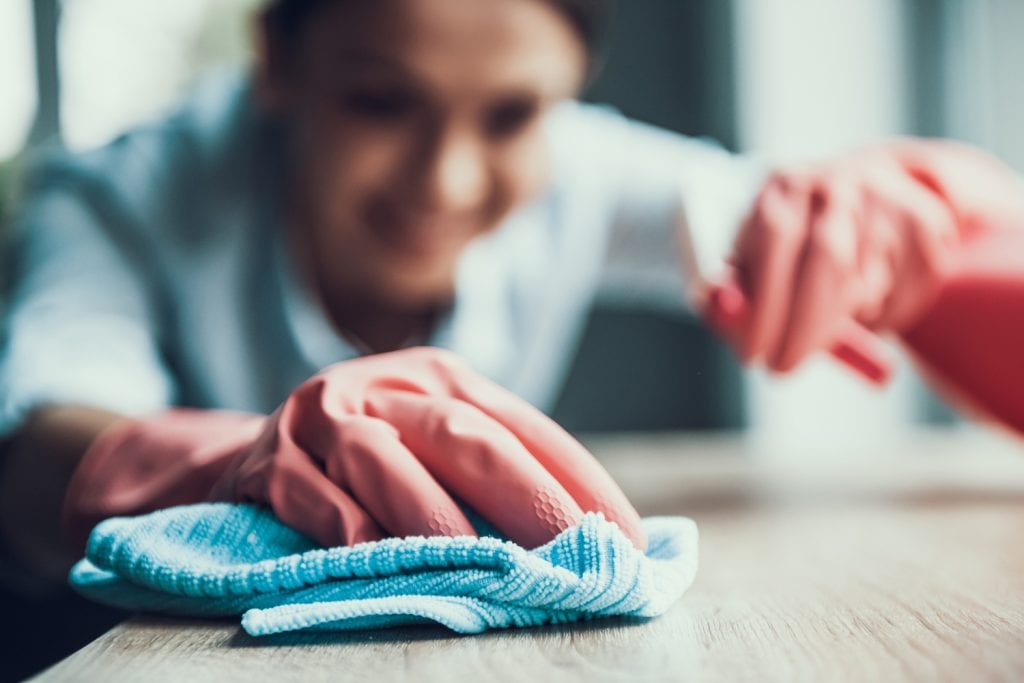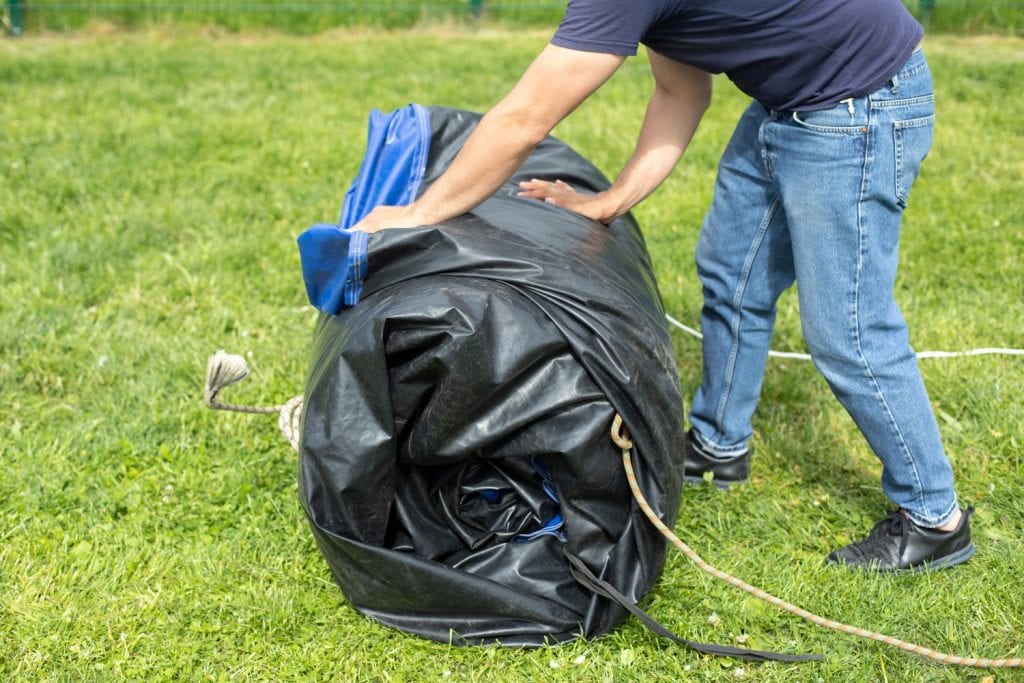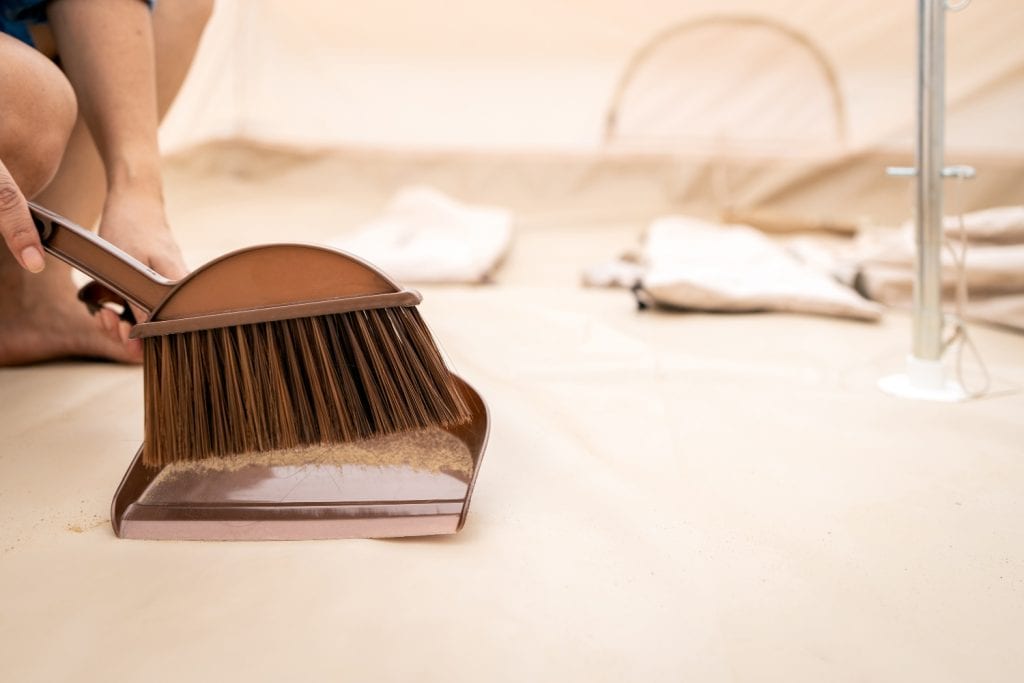Cleaning your tent after camping is not the funnest job in the world, but it’s necessary. Learn how to clean different types of tents and stains.

Enjoying the great outdoors in your tent is so fun and rewarding – you get to breathe the crispy fresh air, listen to the soothing forest soundtrack and admire spectacular landscapes live instead of on your computer desktop. The real version is super ultra HD, but this means it also involves real dirt, mud, bugs, tree sap, rain and other not-so-enjoyable moments.
Luckily, cleaning your tent is easy if you do it properly and regularly, so we think the joy of camping far outweighs the negative sides.

General tips on tent care
The best thing you can do is to be careful and mindful of the mess you make in and around your tent as this will make your life a lot easier when it’s time to pack up and go home. Prevention wins every time. Most annoying and unwanted scenarios, like mould, holes and sticky ant feasts, can be avoided if you just take those 10 extra minutes and give your tent some TLC.
Here is a list of tent house rules that you should always insist on, even when you are at a festival with a bunch of tipsy friends:
- Leave your shoes outside – dirt inside the tent is annoying and it can damage the floor.
- Keep food outside – keeps tent clean and prevents furry hungry burglars from entering.
- No dogs inside – let your pup sleep in the tent vestibule and avoid damage from sharp nails and hair that’s impossible to get out later.
- Expert tip: use a thick blanket to cover the floor – you can shake it out every day to get rid of inevitable dirt, and it’s also soft and provides insulation.
If you are on a family camping trip, teaching your kids to clean up their own mess will definitely help teach them not to make it in the first place. Here are some more golden tips for camping that will help you stay organised.
Step-by-step guide to cleaning a tent
1. Gather cleaning supplies
First, gather the necessary cleaning supplies. You’ll need a soft-bristled brush, mild detergent (such as non-detergent soap or a specialized tent cleaner), a sponge or cloth, a bucket, and access to clean water.
2. Remove tent components
Start by removing all tent components, including the rainfly, groundsheet, and any stakes or poles. Lay them out flat in a clean, open area.
3. Shake off dirt
Take each component and shake off any loose dirt, debris, or leaves. Use a soft-bristled brush to gently brush away stubborn dirt or mud.
4. Spot clean stains
Inspect the tent for any stains. Spot clean these areas using a sponge or cloth dampened with a mixture of mild detergent and water. Avoid using harsh chemicals or abrasive scrubbers — they can damage the tent fabric.
5. Prepare cleaning solution
Fill a bucket with lukewarm water and add a small amount of mild detergent. Stir the solution to create suds.
6. Clean the tent
Dip a sponge or cloth into the cleaning solution and gently scrub the entire tent, focusing on areas with visible dirt or stains. Be sure to clean both the interior and exterior surfaces.
7. Rinse thoroughly
Once the tent is clean, rinse it thoroughly with clean water to remove any soap residue. Use a hose or a clean bucket of water for rinsing.
8. Air-dry the tent
Hang the tent components in a well-ventilated area to air dry completely. Avoid direct sunlight, as prolonged exposure can damage the fabric. Ensure that the tent is completely dry before storing it to prevent mould and mildew growth.
9. Reassemble
Once the tent components are dry, reassemble them according to the manufacturer’s instructions (see how to set up a tent here). Make sure all zippers are closed, and seams are properly aligned.
10. Properly store the tent
Store the tent in a cool, dry place away from direct sunlight and moisture. Avoid storing it in a compressed or damp state, as this can lead to mold growth and fabric damage. Use a storage bag or container to protect the tent from dust and pests.

How to wash a tent?
Hand washing
Hand washing is the preferred method for cleaning tents, as it allows for greater control over the cleaning process.
Machine washing
If machine washing is permitted for your type of tent, use a front-loading washing machine on a gentle cycle with mild detergent. Just remember to remove any sharp objects like stakes or poles before starting.
How to clean a muddy tent
And what to clean a tent with? If your tent does end up muddy or stained, the best approach is spot cleaning. First, gently brush out everything you can after the tent has dried. Then, use plain warm water to clean most regular stains – it is the best choice for your tent fabric. Detergent, dish soap and other cleaning solutions are too harsh and may eat out the waterproof coating on your tent, as can scrubbing too hard. For more stubborn stains, use some gentle hand soap diluted in water and a soft sponge.
If your tent has a funky smell or it’s dirty all around, you can soak it in a tub or a large wash basin filled with soapy warm water, which shouldn’t be too hot to avoid heat damage. There are also cleaning solutions designed specifically for outdoor gear. Let it soak for a few hours, then rinse thoroughly and let dry completely. You should probably reapply the waterproof coating after this treatment.
If there’s pine sap on your tent, scrape it off when it dries out and finish it off with a bit of oil and a cloth.
Never use bleach, dish soap or any abrasive cleaner and don’t try chucking your tent into the washing machine as this will almost certainly damage the seams and the tent floor.
How to clean a tent with mould
The first step is to assess the damage – if the mould has already spread significantly or caused holes in the tent, don’t bother cleaning it. Mould is a tough opponent to beat, but you have a good chance of success if you detect it early on. If it’s just a few localised specks or spots, you can use a homemade solution of 1 part vinegar to 3 parts water or some salt and lemon juice, soak the affected spot without too much scrubbing and let it sit like that until it dries. You may need to repeat this process several times. There is no need for thorough rinsing, just wipe lightly with a damp cloth and definitely reapply a waterproof coating to the treated area.
How to clean a canvas tent
Canvas tents are valued because they are durable, comfortable and sustainable, but they are more susceptible to mould because they are made from cotton, a delicious organic meal for the mould. They are also pricier than regular plastic tents, so you really don’t want to neglect your canvas tent and have your yay-I’m-going-camping smile melt away at the sight of black spots everywhere. Never store your clean, dry tent in a humid basement!
You can clean and maintain your canvas tent just like you would a plastic one, but you need to take extra care to keep it dry. Treat mouldy spots with the vinegar or lemon solution mentioned above and be aware that you will never get rid of the ugly stains, but you can kill the mould and stop it from spreading.
How to clean plastic tent windows
Plastic windows tend to get yellowish and dull over time. To restore their old shine, wipe them down with a microfiber cloth, wash them with a drop of mild soap or a very gentle glass cleaner and then buff with a towel.
Avoid getting the cleaner onto the fabric around the window and be careful with chemical cleaners – tough glass can withstand chemicals mixed with elbow grease, but plastic can get permanently damaged and cloudy. A good tip is to work some car polish onto the clean windows to make them more resistant to dirt build-up.
How to clean a tent that smells?
If your tent has developed an unpleasant odour, try to freshen it up. One camping hack is to spot clean the affected areas with a mixture of vinegar and water. Alternatively, you can sprinkle baking soda on the tent surfaces and allow it to sit for several hours before brushing or vacuuming it away.
How to store a tent?
- Clean and dry the tent thoroughly before storage to prevent mould and mildew growth.
- Store the tent in a breathable storage bag to allow for air circulation.
- Avoid compressing the tent too tightly, as this can damage the fabric and waterproof coatings.
- Store the tent in a cool, dry place away from direct sunlight and moisture.
- Periodically inspect the tent for any signs of damage

Additional tips
Finally, an often ignored but very useful piece of equipment to have is a first-aid tent repair kit. Pack one and never worry about leaks and stuck zippers.
Remember, the single most important tip is to never ever store your tent wet. Everything else is easily manageable.
If cleaning a tent is too much of a hassle, go ahead and buy a new one – but please don’t just leave your tent at the campsite and make your trash someone else’s responsibility! Be a good camp neighbour! 😊
Get ready for first-class tentertainment
Now that you’ve covered all the bases, you can start planning your next camping trip. And there’s no better place to do it than the beautiful Camping Village Šimuni. Simply reach out via our contact form and we’ll handle the rest.